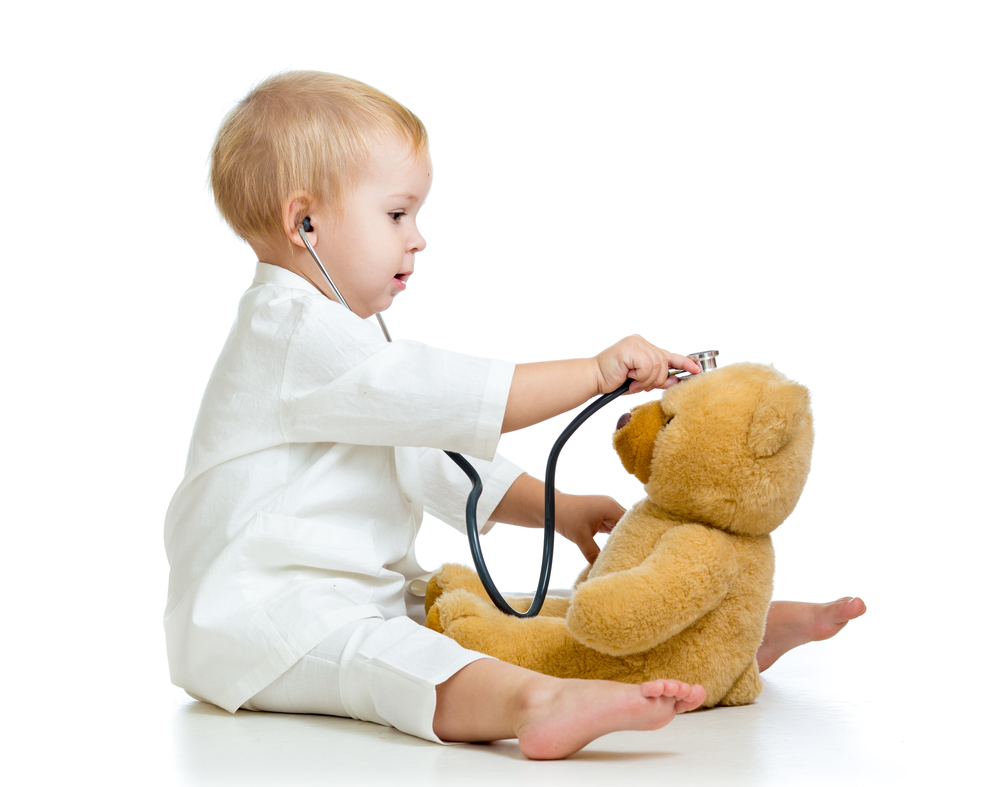
Back in August, I reviewed a recent meta-analysis that suggested combined treatment enhances recovery across a range of common mental health difficulties. Its limitation? In many ways, words like ‘psychotherapy’ are a little broad, but the results were nonetheless encouraging (Kennedy-Williams, 2014).
So to this month, and a new randomised controlled trial (RCT) published in JAMA Psychiatry (Hollon et al, 2014) investigating the effects of combining cognitive therapy (CT) with antidepressant medication (ADM) in assisting the rate of recovery in major depressive disorder (MDD).
Methods
Participants (N=452) were recruited from a number of clinics across North America. They were randomised to receive either CT plus ADM, or ADM alone. They were stratified according to sex, MDD chronicity, recurrence, severity and marital status. The latter of which is particularly encouraging to see, given the reduced risk of MDD in those who are married.
Blind evaluations of recovery were conducted using a modified version of the Hamilton Rating Scale for Depression (HRSD) and the Longitudinal Interval Follow-up Evaluation (LIFE).
Inclusion criteria:
- Meeting DSM-IV criteria for MDD which is either chronic (duration >2 years) or recurrent (>1 episode in previous 3 years)
- A score of 14 or more on the HRSD
- Aged 18 years or over
- English speaking
- Able to provide informed consent
Exclusion criteria:
- A history of bipolar disorder or non-affective psychosis
- Substance dependence in the past 3 months
- DSM-IV axis I disorders requiring non-protocol treatment
- DSM-IV axis II disorders poorly suited to study treatments (i.e. borderline, schizotypal or antisocial personality disorder)
- Medical conditions precluding participants from receiving ADM
- Current medications known to induce depression
- Mandated treatment, or compensation issues
There are two attention-grabbing elements here:
- The first is the emphasis on ‘personalised medicine’, essentially continuing treatment until the desired result is achieved. Such a result, in this case, is recovery.
- Which leads to the second headline; that treatment would continue beyond mere remission (which they defined as 4 consecutive weeks of minimal symptoms), into recovery (which was defined as 6 months without relapse following remission).

Personalised medicine proposes the customisation of healthcare using molecular analysis; with medical decisions, practices, and/or products being tailored to the individual patient.
Cognitive therapy
For those psychologists out there; the CT treatment followed the ‘Beckian’ manual (Beck et al, 1979) for depression, and was delivered primarily by doctoral-level psychologists (N=12), plus one psychiatrist, and one nurse specialist. Interestingly, where co-morbid axis II problems were present (but not meeting criteria for exclusion), the treatment was augmented by elements of CT for personality disorders (Beck, Freeman, & Davis, 2003). Sessions were 50 minutes in length, and frequency was at the discrepancy of the practitioner.
Antidepressant medication
Several different classes of ADM were used. Participants were initially prescribed the most easily tolerated SSRI class, at the maximum tolerated dose. For those who showed poor response, these were switched to tricyclic, or monoamine oxidase inhibitor class ADMs, known to be harder to tolerate. As with CT, practitioners were free to alter dosages as required.
Results
- Recovery rates were higher in the CT plus ADM group versus ADM alone (72.6% vs 62.5%; t(451) = 2.45; P = .01; hazard ratio [HR], 1.33; 95% CI, 1.06 to 1.68; number needed to treat [NNT], 10; 95% CI, 5 to 72)
- This was, however, limited to more severe, non-chronic MDD (81.3% vs 51.7%; n = 146; t145 = 3.96; P = .001; HR, 2.34; 95% CI, 1.54 to 3.57; NNT, 3; 95% CI, 2 to 5)
- Also, attrition rates were significantly lower in the CT plus ADM group versus ADM alone (18.9% vs 26.8%; t(451) = −2.04; P = .04; HR, 0.66; 95% CI, 0.45 to 0.98)
- Despite augmented CT treatment, participants with comorbid axis II disorders, which represented 49.8% of the study population, were significantly less likely to recover irrespective of treatment condition versus those without (61.2% vs 73.5%; t(451)=2.81; p=.01; HR, 1.40; 95% CI, 1.11 to 1.77)
- They were also more likely to drop out, again irrespective of treatment condition (27,4% vs 18.4%; t(451)=2.09; p=.04)
- Finally, patients in the combined condition experienced fewer serious adverse events than those in the ADM condition (49 vs 71; P=.02)

This RCT suggests that cognitive therapy plus antidepressants is a safe and effective approach for people with severe non-chronic depression.
Conclusions
The authors concluded that:
Cognitive therapy combined with medication treatment enhanced rates of recovery relative to medications alone, with the effect limited to patients with severe non-chronic depressions.
With regard to the relative effects of CT and ADM, they highlighted that their results suggest:
CT engages different mechanisms than ADM but that it likely only does so in some patients.
Finally, regarding those with Axis II disorders, the authors acknowledged that, despite a modified version of CT, they:
…evidenced higher rates of attrition and lower rates of recovery than did those without comorbid axis II disorders irrespective of treatment condition.
Limitations
- The study was undertaken on a North American, predominantly White (85.8%) population
- As the authors acknowledged, there was no ‘psychotherapy only’ condition, or any psychotherapy comparison group, to explore CT versus other psychological interventions
- There was no economic evaluation conducted, to explore any cost-saving benefits of combining treatments
Summary
The editorial accompanying the article hails it as one of the most important single studies into the combined effects of ADM and psychotherapy of all time (Thase, 2014). It certainly operates on a large scale. And it’s true too, that a single study with a large number of participants reduces the likelihood of a type II error (finding false negative results), over meta-analyses including several smaller studies.
The idea of personalised medicine in research seems a complex one. On the one hand, this study may be hard to replicate, due to the personalisation of dosages, therapy frequency, and so forth. However, allowing practitioners and participants to alter treatments not only encourages patients a more active role in their treatment, in research terms, it better emulates routine clinical practice, rather than a rigorous research protocol with little bearing on the real world.
In the UK context though, the ‘personalised medicine’ concept is slightly more problematic, particularly in psychological services, where time-limited treatments are required to meet the over-demand. Rarely, it would seem, would practitioners be afforded the luxury of such an approach, although clearly, it seems efficacious.
Similarly, from a UK perspective, an evaluation of the economic benefit of combining treatments, particularly with such a rigorous follow-up procedure, would have added further weight to the argument that, at least in severe, non-chronic cases, combined treatment does indeed work well in supporting recovery from MDD.

Will this personalised approach to treating depression ever be viable in the UK?
Links
Hollon SD, DeRubeis RJ, Fawcett J, et al. Effect of Cognitive Therapy With Antidepressant Medications vs Antidepressants Alone on the Rate of Recovery in Major Depressive Disorder: A Randomized Clinical Trial. JAMA Psychiatry. 2014;71(10):1157-1164. doi:10.1001/jamapsychiatry.2014.1054. [Abstract]
Thase ME. (2014). Large-Scale Study Suggests Specific Indicators for Combined Cognitive Therapy and Pharmacotherapy in Major Depressive Disorder (Editorial). JAMA Psychiatry. Published online August 20, 2014. doi:10.1001/jamapsychiatry.2014.1524. [Abstract]
Beck AT, Rush AJ, Shaw BF, Emery G. (1979). Cognitive therapy of depression. Guilford Press, New York.
Beck AT, Freeman A, Davis DD. (2003). Cognitive Therapy of Personality Disorders. Guilford Press, New York.
Kennedy-Williams, P. (2014) Combining Psychotherapy and Antidepressants is best for Common Mental Illnesses. The Mental Elf, 19 Aug 2014.

RT @Mental_Elf: Cognitive therapy plus antidepressants for depression http://t.co/J3FRuzPbmh
@Mental_Elf great review. Unfortunate that people who use substances are excluded from the trial although not uncommon in trial criteria..
Cognitive therapy plus antidepressants for depression: Patrick Kennedy-Williams highlights a new large-scale R… http://t.co/BeDVF4tAHv
Olivia Cialdi liked this on Facebook.
splendid review/-appraisal @Mental_Elf: Cognitive therapy plus antidepressants for depression http://t.co/7lF9iI8XJc”
@WesselyS @Mental_Elf yes. Axis 2 subgroup seems good evidence for the need for more intense/diverse therapy options than IAPT for PD too
@WesselyS @Mental_Elf Good to see research starting to reflect reality of ‘personalising’ treatment based on response not rigid protocol.
@WesselyS @AlysColeKing @Mental_Elf Oddly I get this when I try that link – am intrigued http://t.co/MlZf5NiJHg
@WesselyS @Mental_Elf is it really that surprising that ‘talking’ about life’s difficulties could benefit people?
@WesselyS @Mental_Elf Also I find it interesting that there is no mention of the long term effects of anti-depressants, why is this?
‘Cognitive therapy plus antidepressants for depression.’ The Elves review an important JAMA study @mental_elf http://t.co/bOxCcx0aEV
Cognitive Therapy, antidepressants and personalised treatment of depression. Join the debate.. http://t.co/VR8i0ipCek
http://t.co/B0IEFiDZdW
The Mental Elf liked this on Facebook.
Kirsten Corden liked this on Facebook.
Lisa Eden liked this on Facebook.
Today @paddy_kw on @JAMAPsych study of Cognitive Therapy plus Antidepressants vs Antidepressants Alone for Depression http://t.co/RPzEhmHkSe
Excellent review – worth checking out James Coyne (@CoyneoftheRealm) for a dissection of this paper as well
Excellent review on combined treatment – check James Coyne (@CoyneoftheRealm) on this paper as well – http://t.co/3DekcAsL2J
.@Joni_Coleman Disappointed that @Mental_Elf uncritically accepted authors’ spin. Compare http://t.co/ajNiaNmcIC to http://t.co/cdsqcpJ6zq
In the News: Study investigating effects of cognitive therapy plus antidepressants for depression, via @Mental_Elf http://t.co/JWKZLS0qg3
RCT suggests cognitive therapy plus antidepressants is safe & effective approach for severe non-chronic depression http://t.co/RPzEhmHkSe
@Mental_Elf Person-centred therapy is effective, enabling people to fathom, cope with, &/or resolve depressing feelings and thoughts
Mental Elf: Cognitive therapy plus antidepressants for depression http://t.co/EN04mlBUO5
Shelley Louise liked this on Facebook.
Michael Lavdas liked this on Facebook.
Research review: #cognitivetherapy plus #antidepressants for #depression http://t.co/q3faJtOq1o via @sharethis @Paddy_kw @Mental_Elf
Cognitive therapy plus #antidepressants for #depression http://t.co/eHkJI4sszx via @sharethis
Don’t miss: Cognitive therapy plus antidepressants for depression http://t.co/RPzEhmHkSe
@Sineady25 @Mental_Elf: Don’t miss: Cognitive therapy plus antidepressants for depression http://t.co/TKTYZWV0vN
June Dunnett liked this on Facebook.
Cognitive therapy plus anti-depressants for depression via @Mental_Elf http://t.co/pao05bexgd
JAMA Psychiatry study about the effects of Cognitive therapy plus antidepressants for #depression http://t.co/K8pPX1pJV6
[…] http://www.thementalelf.net/mental-health-conditions/depression/cognitive-therapy-plus-antidepressan… […]